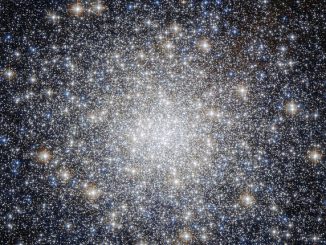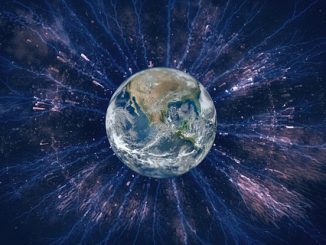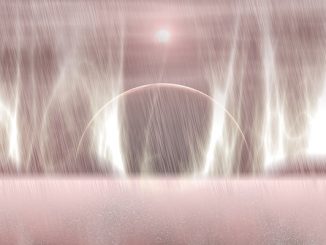
Searching for life outside Earth has become a never ending quest. And researchers from NASA’s Jet Propulsion Laboratory (JPL) in Pasadena, California might have come up with the easiest way yet.
Their method makes use of a process called capillary electrophoresis to separate liquid into its individual components. The process begins with mixing the liquid sample with a liquid reagent. Then, through a process known as induced fluorescence detection, different molecules moving at various speeds can be observed by shining a laser into the mixture. Finally, an electrical current is applied to the mixture, which then allows scientists to see the molecules separate from each other depending on how quickly they respond to the charge applied.
The test is meant to search for amino acids — what we acknowledge to be the building blocks from which all of life on Earth was derived from. It has been modified not just to enable detection of more amino acids in a single test, but also to detect amino acids regardless of how salty or alkaline the liquid sample is. This improvised method is specifically designed to detect alien life on an ocean world.
To find out if their method works, the research team analyzed amino acids in the waters of California’s Mono Lake. Specifically, they analyzed what is referred to as the ‘Signature 17 standard’ — the most common amino acids on Earth. Why did they choose this particular body of water? Because the lake has high alkaline content which makes it almost inhabitable, much like how alien waters probably are on surfaces like Mars; Europa — one of Jupiter’s moons; and Enceladus and Titan — Saturn’s moons.
To identify which amino acids were life-forming and which were not, the team studied the ‘chirality’ of the molecules. Chiral molecules — like what amino acids are — exist in two forms that are identical images of each other. These images are called right-handed and left-handed.
For amino acids that come from non-living sources, the distribution of right-handed and left-handed amino acids is nearly even. But for living sources, left-handed amino acids dominate over the right-handed ones. Taking off from this, scientists are inferring that alien life might also show a preference for either side. So finding such amino acids might be the clue that would point to the existence of alien life forms.
As reported by Phys.org, Peter Willis, the project’s principal investigator, was quoted as saying: “Using our method, we are able to tell the difference between amino acids that come from non-living sources like meteorites versus amino acids that come from living organisms.”
So when do we get to test this method outside our planet? Because it is supposedly ‘relatively simple and easy to automate’, there’s no reason to think that it can’t be deployed in a spacecraft soon. Especially since it’s the ideal complementary tool to help facilitate NASA’s upcoming missions that aim to find life on ocean worlds outside our planet.
The study was published in the journal Analytical Chemistry.
- Bulenox: Get 45% to 91% OFF ... Use Discount Code: UNO
- Risk Our Money Not Yours | Get 50% to 90% OFF ... Use Discount Code: MMBVBKSM
Disclaimer: This page contains affiliate links. If you choose to make a purchase after clicking a link, we may receive a commission at no additional cost to you. Thank you for your support!




Leave a Reply